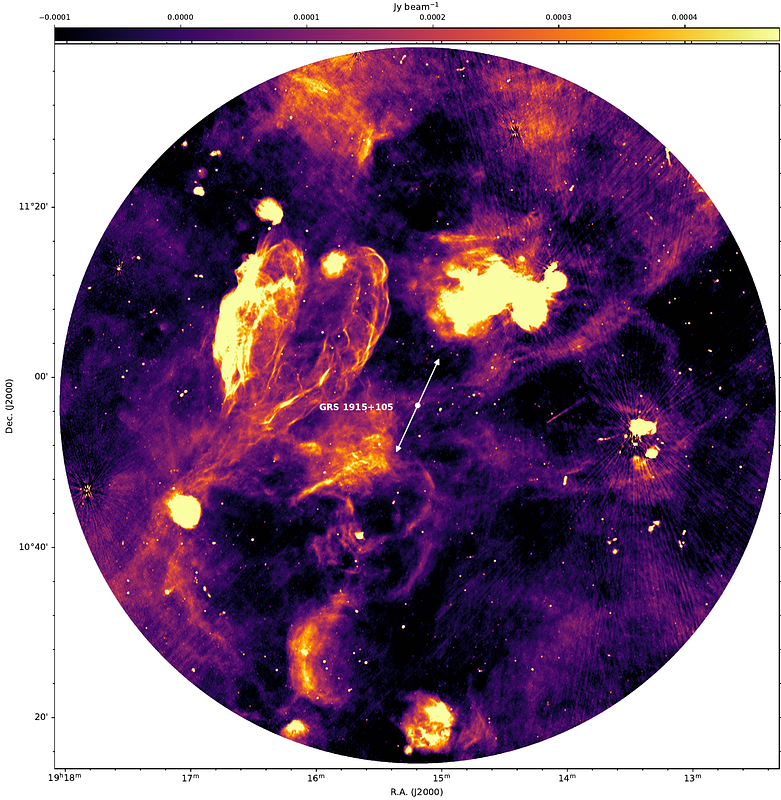MeerKAT discovers a jet-driven bow shock near GRS 1915+105. How an invisible large-scale jet sculpts a microquasar's environment

MeerKAT discovers a jet-driven bow shock near GRS 1915+105. How an invisible large-scale jet sculpts a microquasar's environment
S. E. Motta, P. Atri, James H. Matthews, Jakob van den Eijnden, Rob P. Fender, James C. A. Miller-Jones, Ian Heywood, Patrick Woudt
AbstractBlack holes, both supermassive and stellar-mass, impact the evolution of their surroundings on a large range of scales. While the role of supermassive black holes is well studied, the effects of stellar-mass black holes on their surroundings, particularly in inducing structures in the interstellar medium (ISM), remain under explored. This study focuses on the black hole X-ray binary GRS 1915+105, renowned for its active jets, and the primary aim is to unveil and characterise the impact of GRS 1915+105 on its environment by identifying structures induced by jet-ISM interaction. Methods: We observed GRS 1915+105 with MeerKAT for a total exposure time of 14~hr, and we obtained the deepest image of GRS 1915+105 to date. Using a previously proposed self-similar model for large-scale jets, we inferred the properties of both the jets and the ISM, providing insights into the jet-ISM interaction site. Our observations revealed a bow shock structure near GRS 1915+105, likely induced by a jet interacting with the ISM and blowing an overpressured cavity in the medium. We constrained the ISM density to 100--160 particles\,cm$^{-3}$ while assuming a temperature range of 10$^4$--10$^6$\,K, which implies a bow shock expansion velocity of $20\,{\rm km\,s}^{-1}<\dot{L} <\,360\,{\rm km\,s}^{-1}$. We estimate that the jet responsible for the formation of the bow shock has an age between 0.09 and 0.22 Myr, and the time-averaged energy rate Conclusions: Our results confirm that in stellar-mass black holes, the energy dissipated through jets can be comparable to the accretion energy, and through the interaction of the jet with the ISM, such energy is transferred back to the environment. This feedback mechanism mirrors the powerful influence of supermassive black holes on their environments, underscoring the significant role a black hole's activity has in shaping its surroundings.